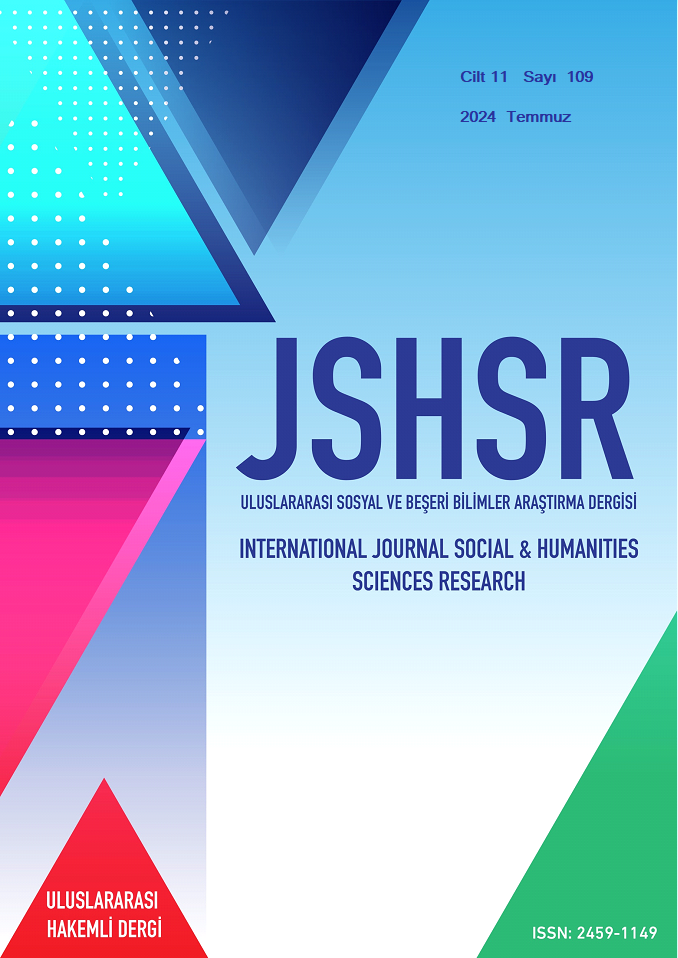Passive and Active Building Systems Capturing the Sun
DOI:
https://doi.org/10.5281/zenodo.13220999Keywords:
Solar Energy, Passive Solar Systems, Active Solar SystemsAbstract
Current climate changes are increasing the temperature of the earth's surface and seas and altering precipitation patterns. This situation creates significant impacts such as rising sea levels, risk of erosion, desertification and possible increased strength of natural disasters of meteorological origin. One of the currently envisaged means to face the impacts of climate change is to reduce carbon dioxide and greenhouse gas emissions, which are one of the most important causes of this change. Energy, which is necessary to meet the living needs of people, is used in many sectors from industry to transport. The construction sector has a significant share among these sectors in terms of energy consumption and most of this energy is met from depleting fossil fuels. As a response to ongoing climate change challenges and the goal of net zero CO2 emissions, the world is increasingly transitioning from fossil fuel-based energy sources to low-carbon societies through the application and utilisation of renewable energy sources. The use of fossil fuels is one of the main reasons for the increase in greenhouse gas emissions. For this reason, it is especially important to investigate the systems that will ensure that the energy required for the comfort needs of human beings is obtained not from fossil fuels but from renewable energy sources that are not likely to be depleted and to know the application methods. In this direction, in the future, the environmental impacts of the building sector should be reduced, human health should be protected and the principles for building practices should be changed in order to improve environmental equity and justice. Within the scope of this article, the methods of obtaining energy from solar energy, which is one of the most important and widely used renewable energy sources, with active and passive systems will be emphasised and inferences about these technologies will be made with examples from around the world. The study reveals to what extent solar energy can be utilised and underlines the opportunities that will move the formation of new building design criteria forward.
References
Alparslan, B., (2010). Ekolojik Yapı Tasarım Ölçütleri Kapsamında Ankara’da Örnek Bir Yapı Tasarımı ve Değerlendirmesi, Yüksek Lisans Tezi, Gazi Üniversitesi, Fen Bilimleri Enstitüsü, Ankara.
Ay, İ. ve Khanları, A. (2015), Güneş Duvarı Sisteminin Çalışma Prensibi ve Türkiye’deki Uygulanabilirliği, Gazi Üniversitesi Fen Bilimleri Dergisi, Tasarım ve Teknoloji, 3(3),525-533.
Bekar, D., (2007), Ekolojik Mimarlıkta Aktif Enerji Sistemlerinin İncelenmesi, Yüksek Lisans Tezi, YTÜ, FBE, İstanbul, Türkiye.
Bilgiç. S. (2003), Passive Solar Design Strategies for Buildings: A Case Study on Improvement of an Existing Residential Building’s Thermal Performance By Passive Solar Design Tools, A Dissertation Submitted to the Graduate School in Partial Fulfillment of the Requirements for the Degree of Master Of Architecture, İzmir Institute of Technology. İzmir.
Bozdoğan, B., (2003), Mimari Tasarım ve Ekoloji. Yüksek Lisans Tezi, YTÜ, FBE, İstanbul.
Cebeci, T., (2022). Aktif Güneş Enerjisi Sistemi Entegre Edilmiş Çok Açılı Cephelerde, Cephe Eğim Açılarının Optimizasyonu Üzerine Bir Araştırma. Yüksek Lisans Tezi, MSGSÜ, FBE, İstanbul
Duyan, F. ve Bayrakdarlar, K. P. (2022). Enerji Etkin Bina Tasarımında Yapı Elemanı olarak Fotovoltaik Sistemler. Mimarlık ve Yaşam Dergisi 7(3), 965-980
Eldengy, K., (2010). Damascus School Revives Traditional Cooling Techniques. Carboun Journal. https://www.carboun.com/category/sustainable-design/
Fleck, B.A., Meier, R.M., Matovic, M.D., (2002). A Field Study of the Wind Effects on the Performance of an Unglazed Transpired Solar Collector, Solar Energy, 73, 209-216.
Fisk, M. J. ve Anderson, H. C. W., (1982). Introduction to Solar Technology, Addison-Wesley Publishing Company.
Güneli, S.S., (2022). Farklı Yaklaşımlarla Enerji Kaynakları. Orient Yayınları.
Gündüz, M. F., (2022). Yüksek Yapılarda Fotovoltaik Panel Kullanımının Cephe Bağlamında İncelenmesi. Yüksek Lisans Tezi. Gazi Üniversitesi, FBE. Ankara.
Kapluhan, E., (2014). Enerji Coğrafyası Açısından Bir İnceleme: Güneş Enerjisinin Dünya’daki ve Türkiye’deki Kullanım Durumu. İstanbul Üniversitesi Edebiyat Fakültesi Coğrafya Bölümü Coğrafya Dergisi, 29, 71-72
Katırcı, U., (2003). Çevre ve Yaşam için Yapı Tasarımı: Norman Foster. Yüksek Lisans Tezi, Gazi Üniversitesi, FBE, Ankara.
Kılıç Demircan, R. ve Gültekin, A. B., (2017). Binalarda Pasif ve Aktif Güneş Sistemlerinin İncelenmesi. Türk Bilim Araştırma Vakfı. (10)1:36-51.
Nikolaidis, P., (2023). Solar Energy Harnessing Technologies towards De-Carbonization: A Systematic Review of Processes and Systems, Energies, (16) 6153, 1-39.
Özdoğan, H.P., (2005), Ekolojik Binalarda Bina Kabuğunda Kullanılan Fotovoltaik Panellerin Tasarım Bağlamında İncelenmesi, Yüksek Lisans Tezi, YTÜ, FBE, İstanbul
Sayın, S. ve Koç, İ. (2011). Güneş Enerjisinden Aktif Olarak Yararlanmada Kullanılan Fotovoltaik (PV) Sistemler ve Yapılarda Kullanım Biçimleri. S.Ü. Müh.-Mim. Fak. Derg., (26) 3: 89-106
Tokuç, A., (2003), İzmir'de Enerji Etkin Konut Yapıları için Tasarım Kriterleri, Yüksek Lisans Tezi, DEÜ, FBE, İzmir, Türkiye.
Uslusoy, S. (2012). Yenilenebilir Enerji Kaynakları Kullanan Enerji Etkin Binaların Yapı Bileşeni Açısından İrdelenmesi, Yüksek Lisans Tezi, Dokuz Eylül Üniversitesi, Fen Bilimleri Enstitüsü, İzmir.
Yılmaz, A, Yılmaz, A. S. ve Bölek, Y. (2015). BIPV Applications for Residences. International Journal of Scientific and Technological Research, (1)1, 109-114.
Yüksek, İ. ve Esin, T., (2009), Yenilenebilir Enerji Kaynaklarının Yapılarda Kullanım Olanakları, 5. Uluslararası İleri Teknolojiler Sempozyumu, Karabük, Türkiye.
Yüre, T. (2007). Güneş enerjisinden edilgen sistem yararlanmada güneş odası ekleme yönteminin iç ortam sıcaklığına etkisinin incelenmesi İstanbul örneği, Yüksek Lisans Tezi, Yıldız Teknik Üniversitesi Fen Bilimleri Enstitüsü, İstanbul.
İnternet Kaynakları
Url-1: https://www.designingbuildings.co.uk/wiki/Solar_chimney
Url-2: https://harvardcgbc.org/housezero/
Url-3: https://www.solaripedia.com/13/139/1263/monash_science_centre_wall.html
Url-4: https://www.designingbuildings.co.uk/wiki/Solar_chimney
Url-5: https://www.istudioarchitects.com/news/2023/4/17/solar-chimneys-are-a-first-for-dc-public-schools
Url-6: https://www.gunisigiaydinlatma.com/Doc/gunisigi%20katalog%20CONV.pdf
Url-7: https://fromzerotohero.gazi.edu.tr/site/wp-content/uploads/2021/09/Module-5.pdf
Url-8: https://heliobus.com/en/referenzen/
Url-9: https://www.enerjibes.com/gunes-enerjisi-ile-ev-isitma/
Url-10: https://core.ac.uk/download/288280178.pdf
Url-11: https://www.solarwall.com/wp-content/uploads/2018/09/SolarWall-EN.pdf
Url-12: https://www.solarwall.com.tr/dunya-uygulama.htm
Url-13: https://www.carboun.com/category/sustainable-design/
Url-14: https://www.archdaily.com/488962/park-passive-house-nk-architects
Url-15: https://www.archdaily.com/899081/hotel-jakarta-search
Url-16: https://hoteljakarta.amsterdam/28277/
Url-17: http://www.breeam.com/offices/the-edge-amsterdam/
Url-18: https://www.archdaily.com/785967/the-edge-plp-architecture
Downloads
Published
How to Cite
Issue
Section
License
Copyright (c) 2024 INTERNATIONAL JOURNAL OF SOCIAL HUMANITIES SCIENCES RESEARCH

This work is licensed under a Creative Commons Attribution 4.0 International License.


